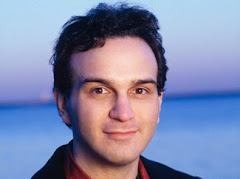Having missed the first instalment of the Beethoven Piano Concerto series which began in late September, I was determined not to miss the second in the series especially when it featured, besides a concerto, a spiffing overture and a lovely Romantic symphony.
The concert opened on an upbeat note with Shostakovich's rousing Festive Overture Op 96. The opening trumpet fanfares were tentative and off-pitch, typical of the weak MPO trumpet section often singled out as the Achilles heel of the orchestra. However, conductor Mark Wigglesworth skilfully smoothed things out with a mix of commanding presence and relaxed gestures at a fast pace, placing emphasis on the whirring upper strings, the wonderful singing ostinato line in the cellos, fine solo performances in the woodwinds especially the flutes and the clarinets as well as the dramatic, pulsating tension of the percussion section that led to a rousing ending.
The evening continued next with Beethoven’s Piano Concerto No. 3 in C minor Op 37 featuring Foo Mei Yi, who is no stranger to the Kuala Lumpur audiences at the DFP Hall. Wigglesworth and the orchestra laid firm foundations with an account of the first movement’s orchestral exposition that managed to be airy yet serious, but Foo's account of the solo part stressed the more lyrical aspects of the concerto at the expense of the brio aspects of the piece. It was as if she was trying to eschew a "Sturm und Drang" interpretation of Beethoven's only piano concerto in a minor key. There were also some occasional mishits, over-pedalling in some spots and weaker bass lines which dampened her limp interpretation of the first movement.
Things improved in the slow movement which was forward-moving yet lyrical and expressive. Foo made the long lyrical lines of the Largo sing, with the solo flute and bassoon encased in her enveloping warm-toned interpretation.
The final Rondo followed almost immediately, rousing us from the reverie of the previous movement. Foo invested the perky theme with great mischief and the final cheeky C major Presto of the thrilling coda was especially full of joy. The audience were thunderous in their applause and Foo obliged them with an unusual encore in the shape of “For Rico” (1981) by the Austrian pianist Friedrich Gulda, a classically conceived tripartite piece in the outer sections, with an improvised jazzy middle section.
In the second half of the concert, Wigglesworth treated the audience to a great performance of Rachmaninov's Third Symphony instead of the more-often played and popular Second Symphony. Composed at Villa Senar, Rachmaninov's house on Lake Lucerne, this symphony seems to hark back with a strong element of nostalgia for his native Russia.
The orchestra played with very full and warm tones generally, especially the strings, led by concertmaster Peter Danis. Avoiding any sentimentality, Wigglesworth gave us a strong, authoritative performance with well-paced tempi and subtle rubato as well as carefully graded climaxes in the first movement.
Wigglesworth imbued the second movement with an emotional yearning as Rachmaninov makes his impassioned plea for the Russia he could not return to, with expressive and beguiling solo work from the concertmaster and principal flautist. The triumphant finale was played energetically and with tightly-reined rhythm and Wigglesworth drove home the finale with a charismatic flourish, with the MPO brass and percussion in full cry.
Monday, 20 November 2017
Wigglesworth's great Rachmaninov Third
Labels:
Beethoven,
Foo Mei Yi,
Mark Wigglesworth,
Rachmaninov,
Shostakovich
Subscribe to:
Post Comments (Atom)



















































No comments:
Post a Comment